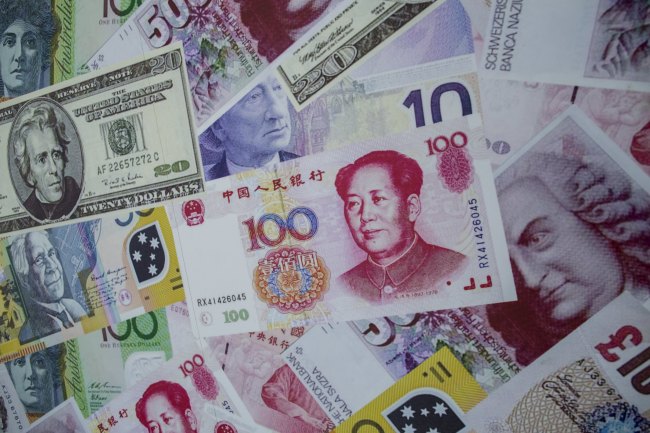With China’s yuan taking the biggest step yet toward joining the dollar and euro as a top-rank reserve currency, the global economy may be approaching an era of greater stability.
So say economists who highlight the dollar’s role in the biggest financial crises in recent decades. Drawn to the liquidity and security of the unit of the world’s biggest economy, investors and governments relied on the dollar and produced dislocations including historically low borrowing costs in the 2000s even as the Federal Reserve raised interest rates.

Rushes toward the safety of the dollar challenged global policy makers in 2008 as money markets seized up, prompting the Fed to open swap lines with counterparts that remain in place today. China responded in 2009 with a call for reducing reliance on the dollar, with central bank Governor Zhou Xiaochuan floating the idea of a “super-sovereign” reserve currency.
While the proposal fell flat, Zhou and his allies began a campaign to win inclusion for the yuan in the International Monetary Fund’s special drawing rights unit. The SDR, as it’s called, is a kind of overdraft account for members of the IMF, convertible into dollars, euros, pounds and yen. The Washington-based fund’s staff said Friday that the yuan has now met the qualification terms for inclusion in the SDR.
“The current configuration of the global monetary-financial system that is centered and increasingly dominated by the dollar is not a stable or a sustainable one,” Stephen Jen, co-founder of SLJ Macro Partners LLP in London and a former IMF economist, wrote with colleague Joana Freire last week.
Some 87 percent of foreign-exchange trading involves the dollar, the most recent survey by the Bank for International Settlements showed. “The role of the U.S. dollar as the world’s dominant vehicle currency remains unchallenged,” the BIS said in 2013, noting that the euro had declined in the wake of the European debt crisis.
With the world’s second-largest economy and as the number-one trading nation, China may offer the global system a currency that can complement the dollar. For now, restrictions on the ability to take money in and out of China, and on what foreign investors can buy, mean the yuan’s role will be limited.
Winning official reserve-currency status still needs approval by the IMF’s executive board, with implementation coming in late 2016. Treasury Secretary Jacob J. Lew told Chinese Vice Premier Wang Yang while attending a Group of 20 gathering Sunday that the U.S. intends to support SDR inclusion as long as the yuan meets existing IMF criteria.
The move will spur global central banks and sovereign wealth funds to put about $350 billion into the Chinese bond market over a five-year period, according to JPMorgan Chase & Co. That’s still a fraction of the $1.27 trillion worth of Treasuries officially held by China.
Building on the SDR achievement to become a true international currency for funding and investing, along the lines of the euro and dollar, may take much longer. China faces questions about rule of law, with the nation’s judicial system subject to oversight by the Communist Party.
“China needs to develop and demonstrate more ‘soft power’ in order to persuade the world to hold its assets and its currency,” Jen wrote. That is “measured by a general sense of admiration and trust from global investors, is more difficult to build and demonstrate.” (Bloomberg)








![[Graphic News] More Koreans say they plan long-distance trips this year](http://res.heraldm.com/phpwas/restmb_idxmake.php?idx=644&simg=/content/image/2024/04/17/20240417050828_0.gif&u=)
![[KH Explains] Hyundai's full hybrid edge to pay off amid slow transition to pure EVs](http://res.heraldm.com/phpwas/restmb_idxmake.php?idx=644&simg=/content/image/2024/04/18/20240418050645_0.jpg&u=20240419100350)





![[From the Scene] Monks, Buddhists hail return of remains of Buddhas](http://res.heraldm.com/phpwas/restmb_idxmake.php?idx=652&simg=/content/image/2024/04/19/20240419050617_0.jpg&u=20240419175937)

![[KH Explains] Hyundai's full hybrid edge to pay off amid slow transition to pure EVs](http://res.heraldm.com/phpwas/restmb_idxmake.php?idx=652&simg=/content/image/2024/04/18/20240418050645_0.jpg&u=20240419100350)

![[Today’s K-pop] Illit drops debut single remix](http://res.heraldm.com/phpwas/restmb_idxmake.php?idx=642&simg=/content/image/2024/04/19/20240419050612_0.jpg&u=)